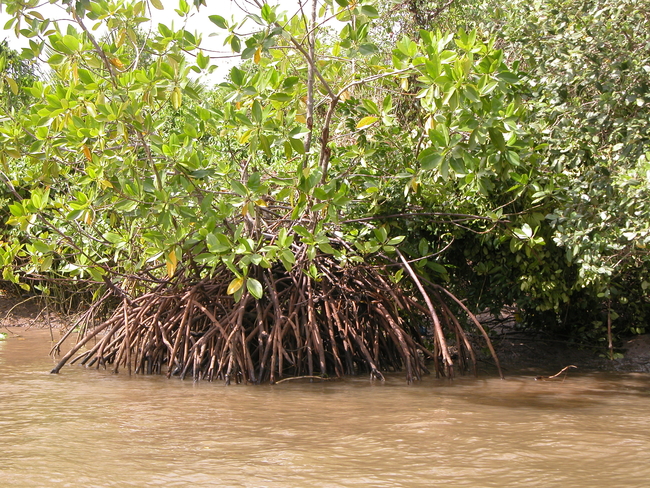21/05/2021 | An interview with Dr Tim Jennerjahn, head of the working group Ecological Biogeochmistry at ZMT, provides insights into his new study on carbon exports and "blue carbon". "Blue carbon" is the carbon stored by coastal and marine ecosystems, also referred to as carbon sinks.
What was the initial question of the study?
Tim Jennerjahn: The question was why carbon export from "blue carbon" ecosystems has not been part of the "blue carbon" budgets so far.
What exactly did you investigate?
Tim Jennerjahn: Since the term "blue carbon" was coined in 2009, there has been a rapid increase in research efforts and funding to study and quantify natural carbon sinks, and the perception of this in science and society has grown. Until now, however, "blue carbon", or carbon sinks in the ocean, are perceived almost exclusively as the carbon in biomass and sediments of mangrove forests, salt marshes, and seagrass beds. An increasing number of researchers counter that there are other carbon sinks in the ocean and in coastal areas that have not been perceived as such or have not been studied. These include kelp forests, for example.
We suggest in our publication that dissolved and particulate carbon exports from these "blue carbon" ecosystems, that enter and are stored in the ocean, also contribute significantly to "blue carbon" reservoirs. This means that global budgets to date are far too low. To this end, we are revisiting E. P. Odum's famous "outwelling hypothesis" from the 1960s, which states that carbon and nutrient export from coastal wetlands contributes significantly to coastal ocean productivity.
What new insights emerged?
Tim Jennerjahn: There is far less research on these exports than on the other "blue carbon" sinks, that is biomass and sediments in coastal wetlands. That is why we can't yet come up with reliable global balances. However, we estimate the carbon fluxes from the studies to date and find that they may be of the same order of magnitude or even larger than the carbon reservoirs in the recognized "blue carbon" ecosystems.
What conclusions can be drawn from this?
Tim Jennerjahn: It can be concluded that the range of climate-relevant natural carbon sinks or carbon storage processes in the context of "blue carbon" is larger than previously thought, and thus the amount of stored carbon is also significantly larger than previously thought. It is thus necessary to study these sinks and processes more intensively in order to quantify the corresponding carbon fluxes. We end the article by formulating the ten most important research questions for the near future in this context.
Why do the results have far-reaching significance?
Tim Jennerjahn: Because we are talking about climate-relevant natural carbon sinks. Our findings, mean that the relevance of known "blue carbon" ecosystems as natural carbon sinks is obviously greater than previously thought. This is another strong argument for preserving or restoring these ecosystems, which also provide many other important ecosystem services.
Publication
Santos, I.R., D.J. Burdige, T.C. Jennerjahn, S. Bouillon, A. Cabral, O. Serrano, T. Wernberg, K. Filbee-Dexter, J. Guimond, J.J. Tamborski (2021). The renaissance of Odum’s outwelling hypothesis in 'Blue Carbon' science. Estuarine, Coastal and Shelf Science 255: 107361. https://doi.org/10.1016/j.ecss.2021.107361





